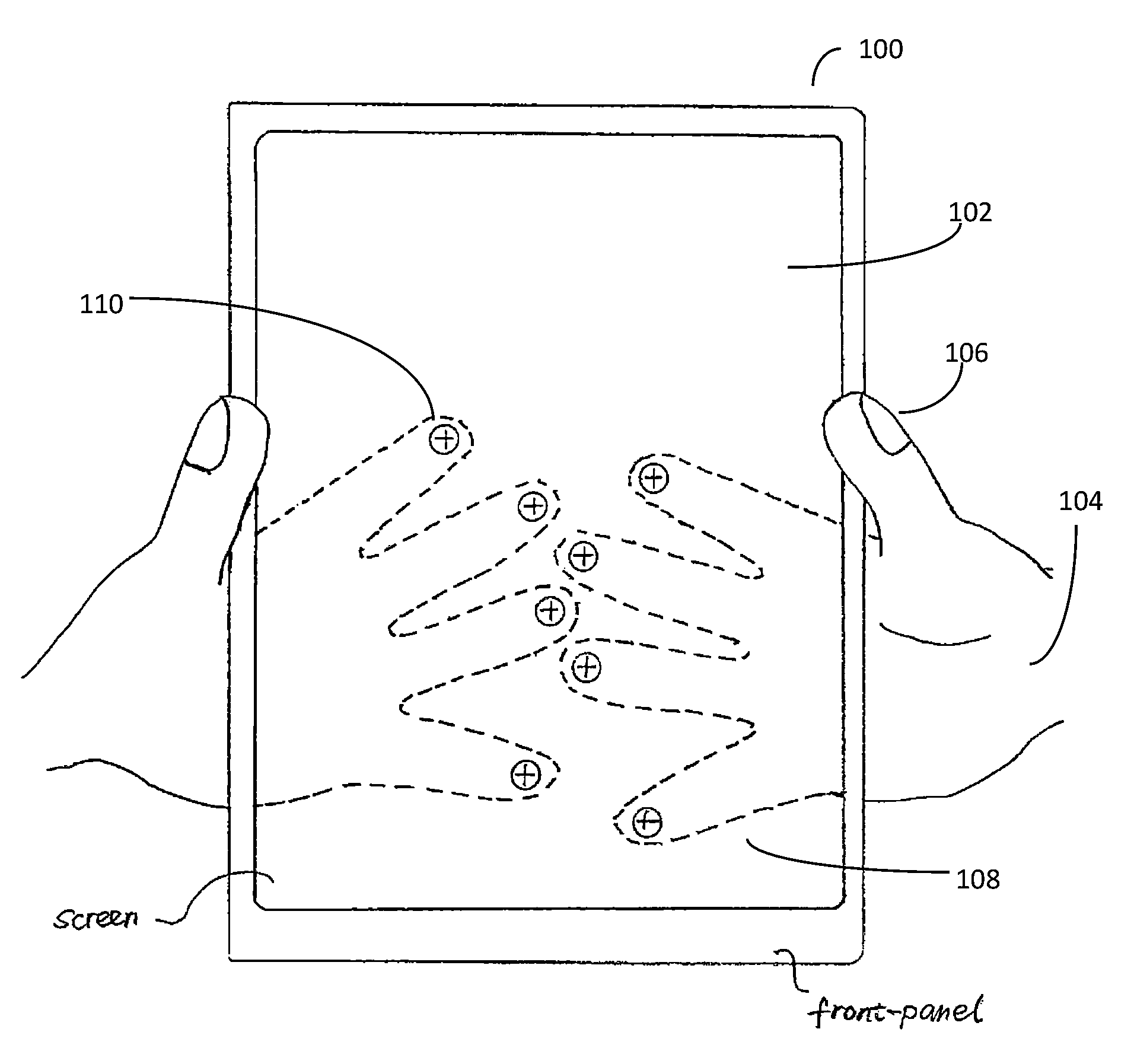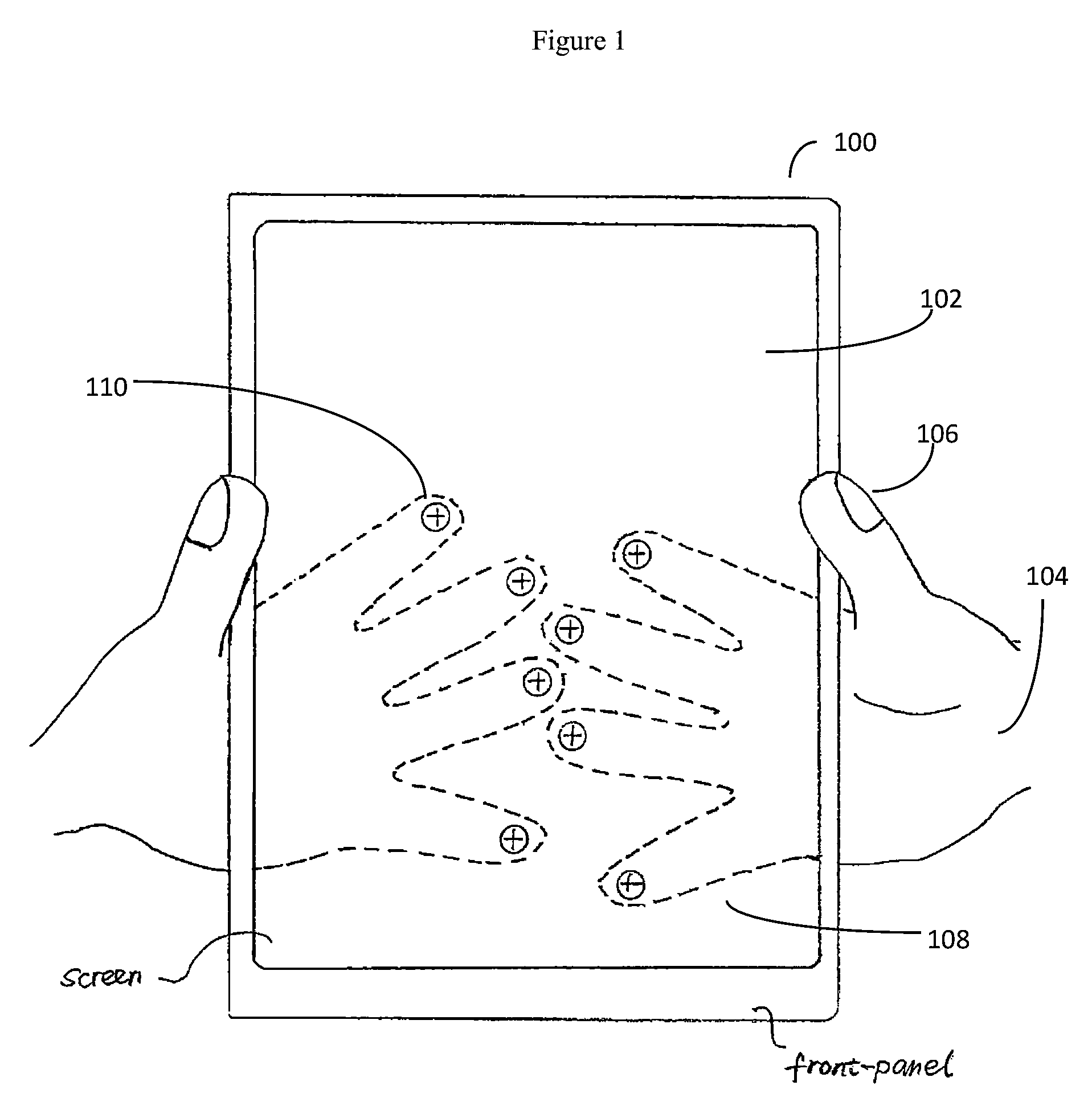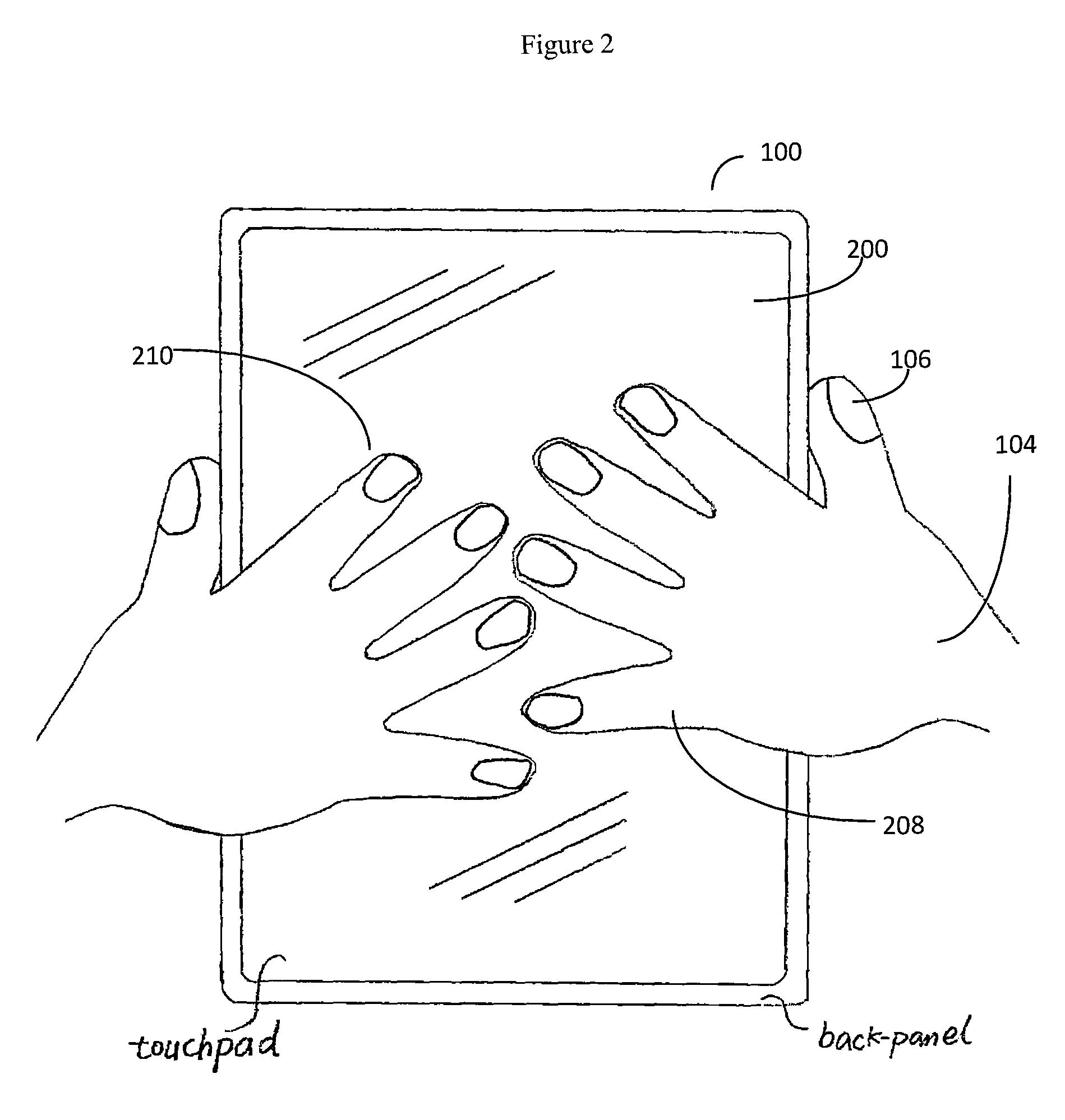Method for user input from alternative touchpads of a handheld computerized device
a technology touchpads, applied in computing, portable computer details, instruments, etc., can solve the problems of user input process, user input process, although requiring a large amount of user attention to operate, and the size of handheld computerized devices continues to get smaller and smaller
- Summary
- Abstract
- Description
- Claims
- Application Information
AI Technical Summary
Benefits of technology
Problems solved by technology
Method used
Image
Examples
Embodiment Construction
[0034]The present invention relates to a handheld computerized device with a bit mapped display screen on the front panel, and a touchpad installed on the back panel, side panel, or other area other than that of the display screen. More particularly, the invention relates to a method and graphical user interface that enable the user to see the user's finger position and motion from behind the device superimposed upon a virtual keyboard layout on the front panel.
[0035]This configuration, seen from the front, is shown in FIG. 1. As can be seen, the user is holding a handheld electronic pad device, similar to an Apple iPad™ or equivalent (100). The front panel of the device is occupied by a large graphics display screen (102), which may be a bit-mapped graphics display screen. Indeed in some embodiments, the whole front panel screen or front panel may be occupied by this graphics display screen (102). The user is holding the device (100) using his or her hands (104), where the user's t...
PUM
 Login to View More
Login to View More Abstract
Description
Claims
Application Information
 Login to View More
Login to View More - R&D
- Intellectual Property
- Life Sciences
- Materials
- Tech Scout
- Unparalleled Data Quality
- Higher Quality Content
- 60% Fewer Hallucinations
Browse by: Latest US Patents, China's latest patents, Technical Efficacy Thesaurus, Application Domain, Technology Topic, Popular Technical Reports.
© 2025 PatSnap. All rights reserved.Legal|Privacy policy|Modern Slavery Act Transparency Statement|Sitemap|About US| Contact US: help@patsnap.com



